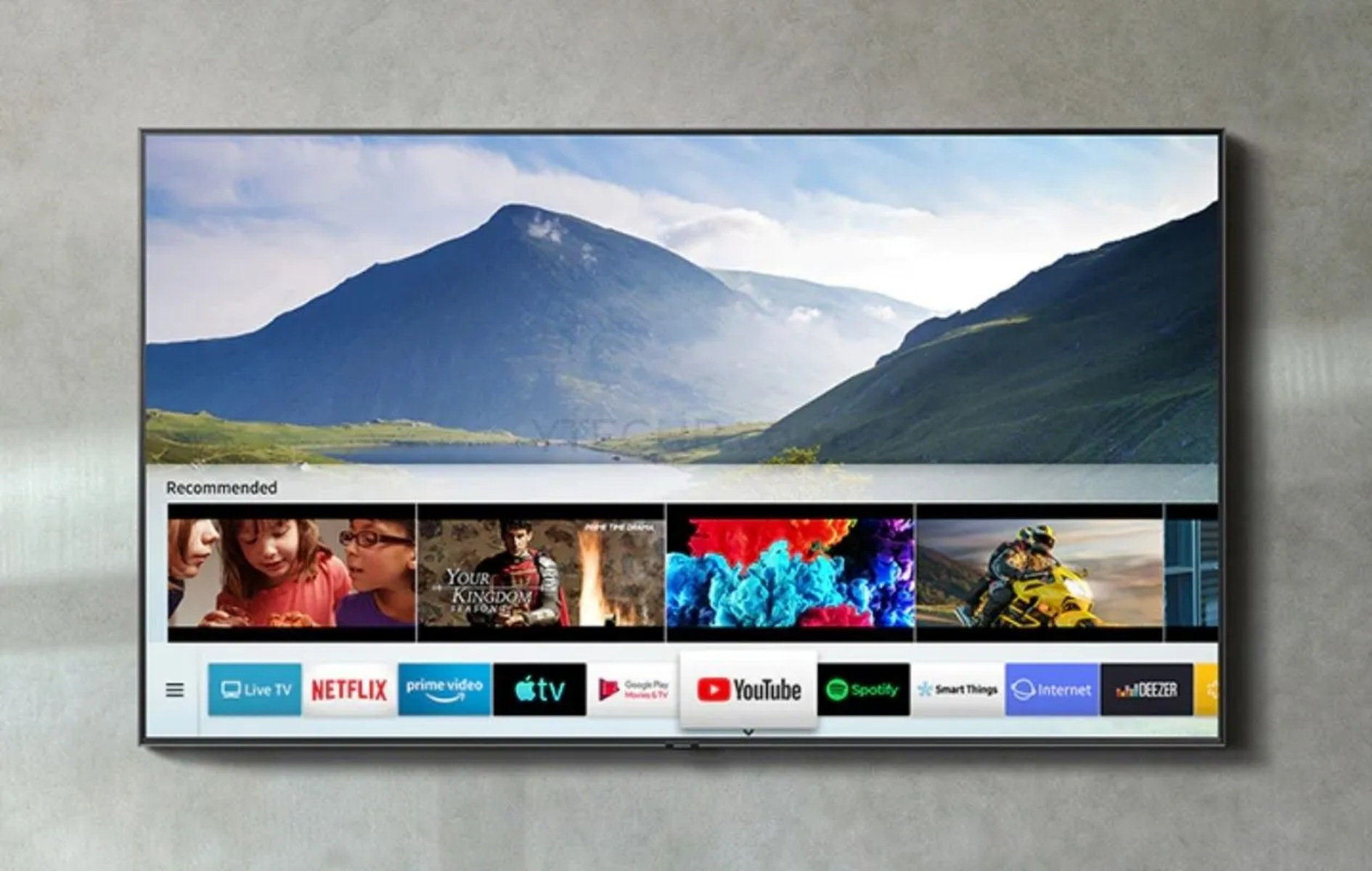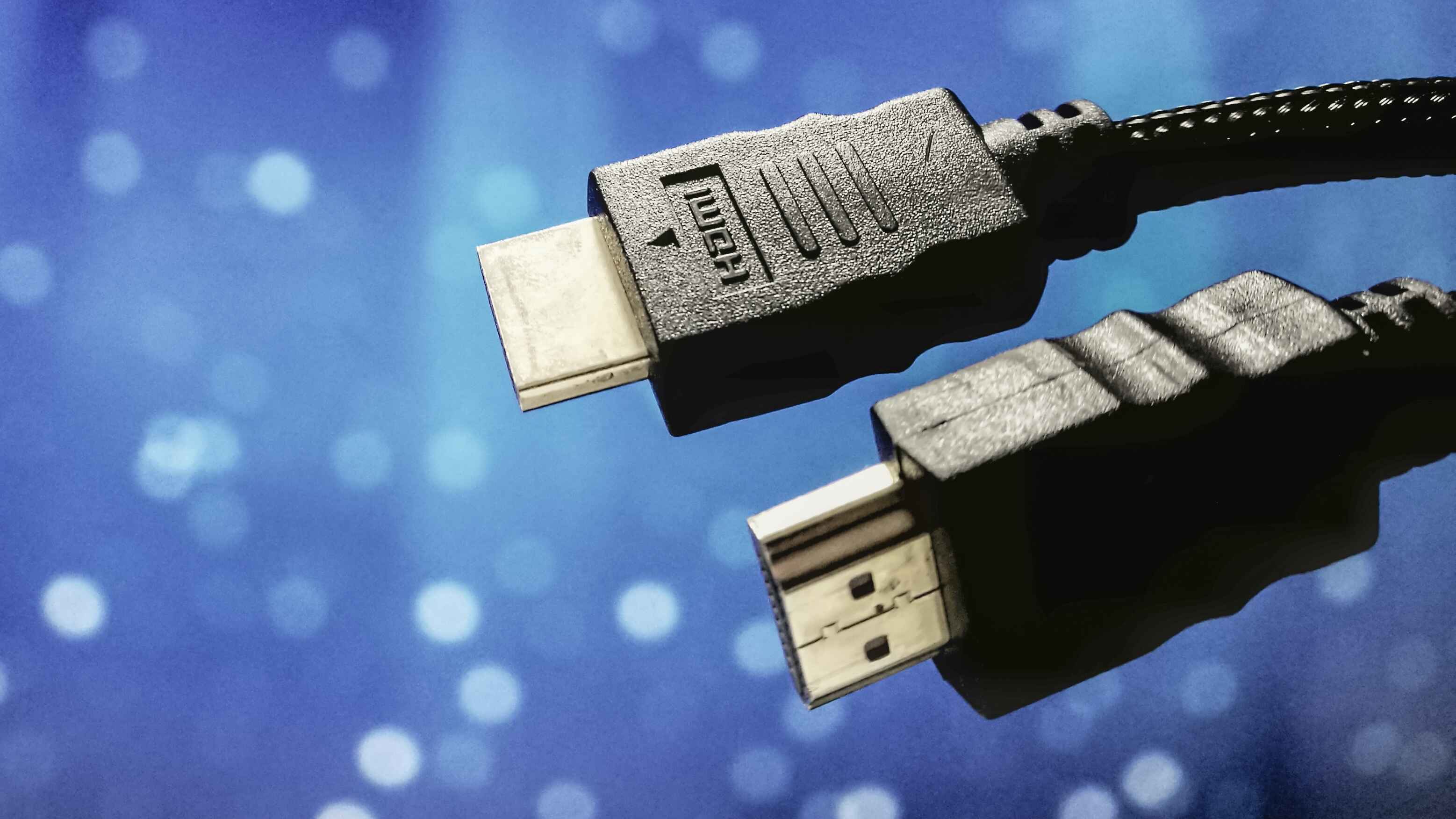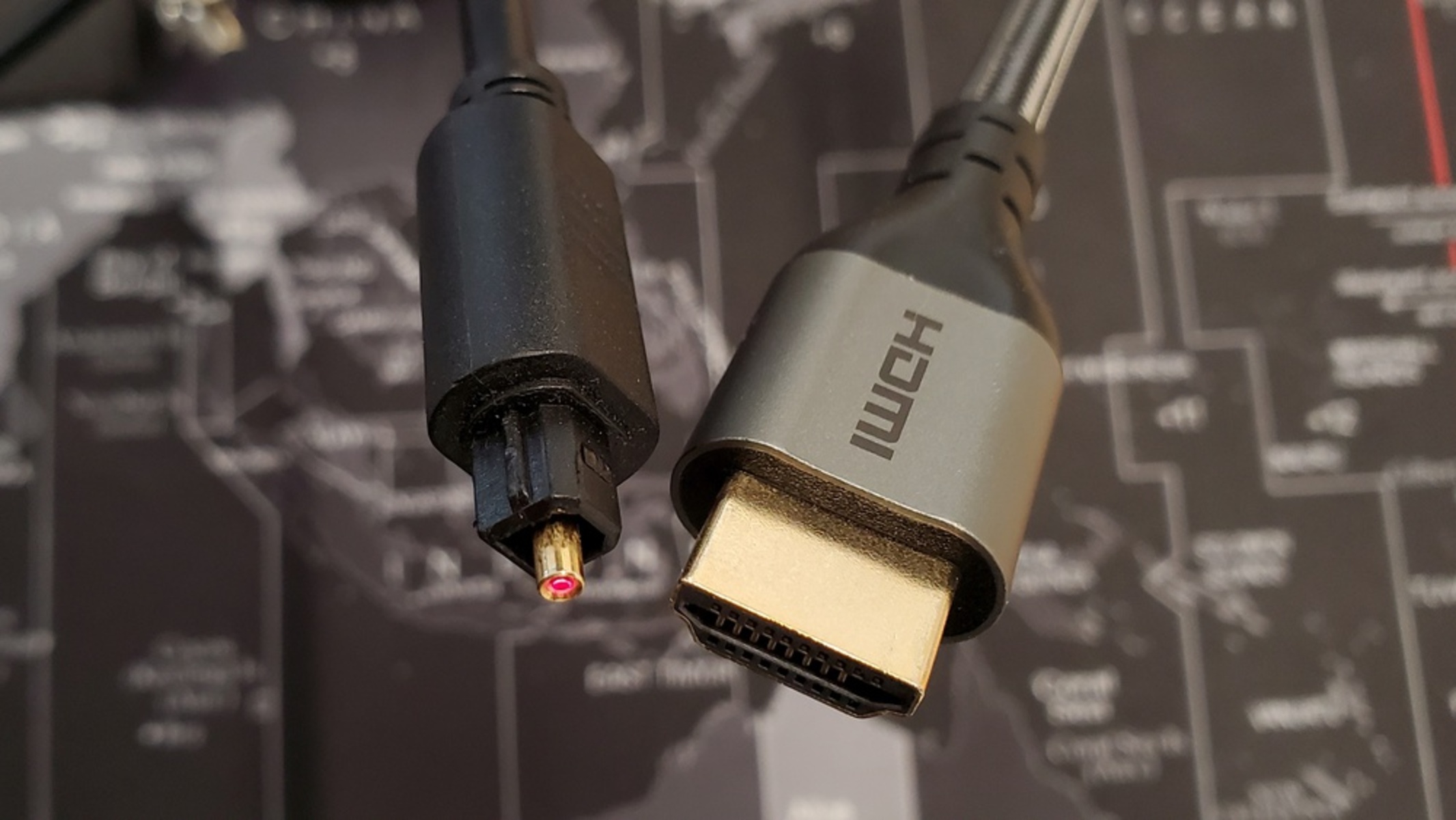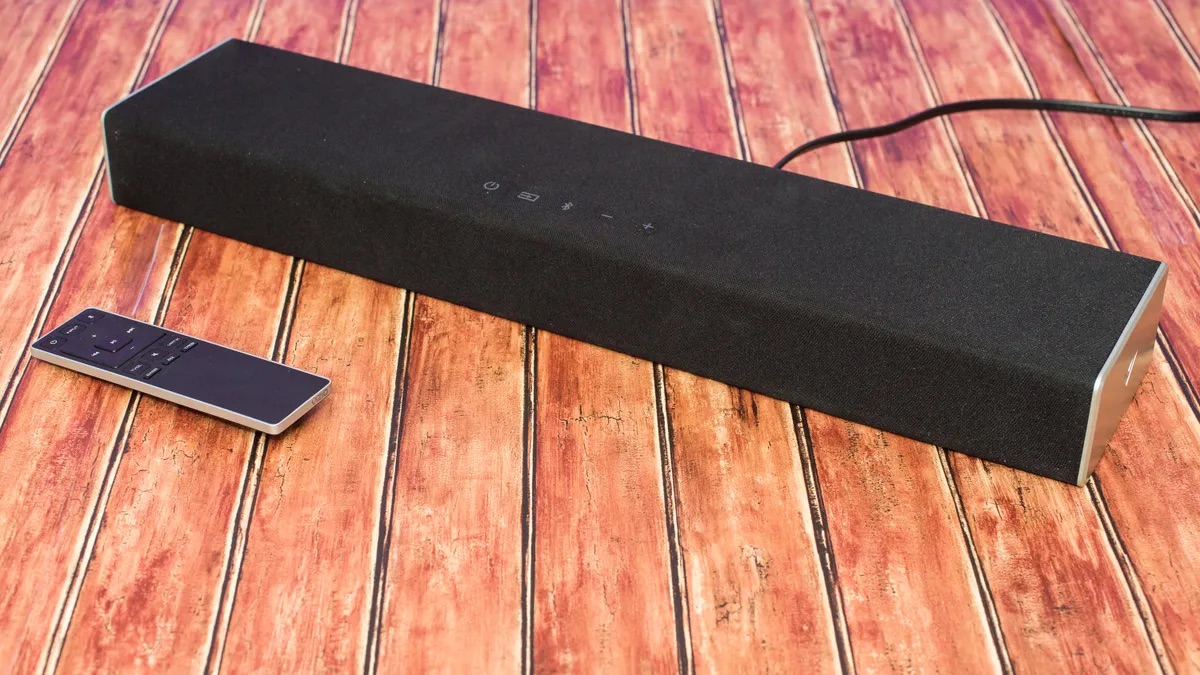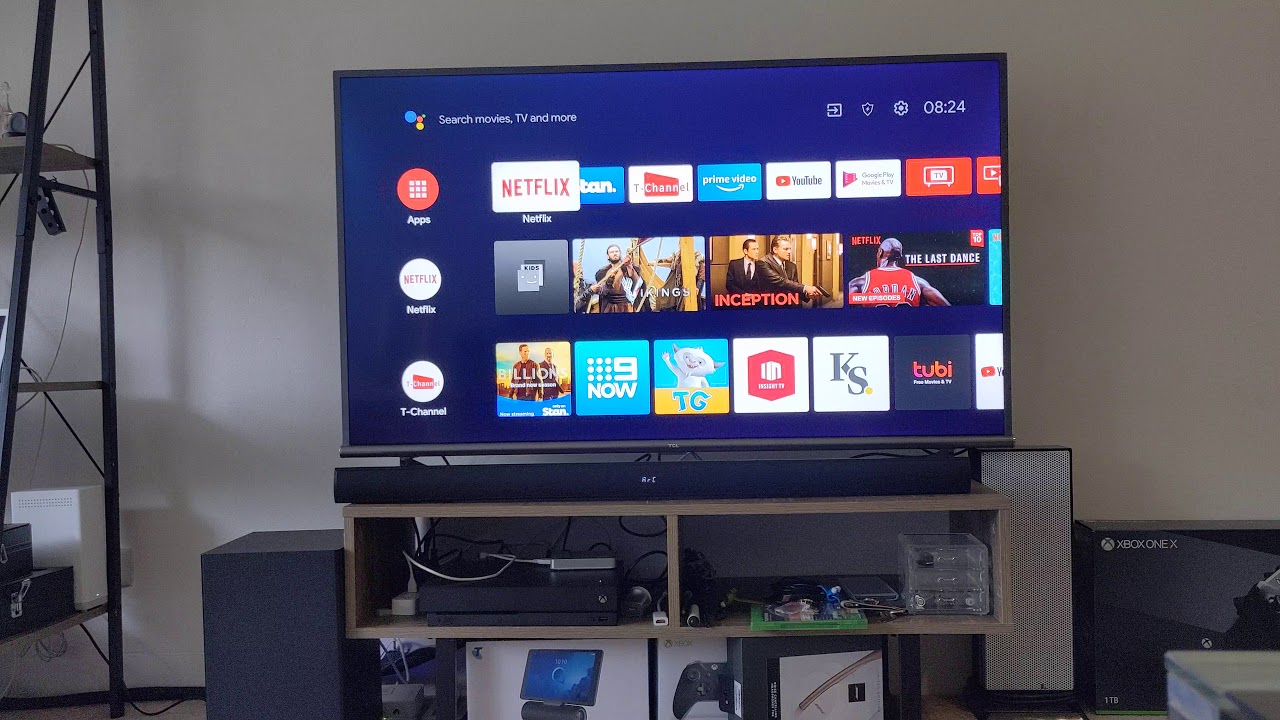Introduction
Welcome to the world of home entertainment, where high-quality audio and video are essential for a truly immersive experience. One of the key components for connecting various devices and ensuring the best possible audio output is the HDMI ARC (Audio Return Channel) cable. Whether you’re a tech enthusiast or just starting to explore the world of home theater systems, understanding what HDMI ARC is and how it works is crucial.
HDMI, short for High-Definition Multimedia Interface, has become the standard connection for transmitting digital audio and video signals between devices such as TVs, Blu-ray players, gaming consoles, and soundbars. This technology offers superior audio and visual quality, making it the go-to choice for modern entertainment setups.
However, when it comes to audio, connecting multiple devices and managing the flow of sound can be complex. This is where HDMI ARC comes into play. ARC is a feature that allows the audio signal from your TV to be sent back to the audio device, such as a soundbar or AV receiver, through the HDMI cable. By utilizing HDMI ARC, you can simplify your audio setup and achieve a seamless audio experience.
In this article, we will explore the ins and outs of HDMI ARC, including its purpose, functionality, benefits, compatibility, and how to set it up. Whether you’re looking to streamline your audio system or improve the audio quality of your home entertainment setup, understanding HDMI ARC is essential.
What Is HDMI?
HDMI, or High-Definition Multimedia Interface, is a digital connection used to transmit high-quality audio and video signals between various devices. It has become the standard for connecting devices such as TVs, Blu-ray players, gaming consoles, and sound systems.
Unlike its predecessor, analog connections, HDMI transmits digital signals, ensuring a clearer and sharper audiovisual experience. It supports both standard definition (SD) and high definition (HD) resolutions, allowing you to enjoy content with stunning detail and clarity.
HDMI cables have replaced multiple analog cables, such as composite, component, and S-Video, simplifying the process of connecting devices. The cables are designed with multiple channels to transmit audio and video simultaneously, eliminating the need for separate cables for each.
Additionally, HDMI supports advanced features like 3D, Ethernet connectivity, and Audio Return Channel (ARC). The versatility of HDMI has made it the go-to connectivity standard for modern home entertainment systems, offering convenience, compatibility, and high-quality audiovisual performance.
There are several iterations of the HDMI technology, with each version bringing improvements in bandwidth, data transfer speed, and features. Currently, HDMI 2.1 is the latest standard, offering support for 8K and 10K resolutions, higher refresh rates, and enhanced gaming capabilities.
When choosing HDMI cables, it’s important to consider the version compatibility with your devices. While newer versions are backward compatible, using an older cable may limit your ability to take advantage of the latest features and capabilities.
In summary, HDMI is a digital connection standard that revolutionizes the way we transmit audio and video signals. Its ability to deliver high-quality audiovisual performance, compatibility with various devices, and support for advanced features make it an indispensable technology for modern home entertainment setups.
What Is ARC?
ARC stands for Audio Return Channel, a feature that allows the audio signal from your TV to be sent back to the audio device through the HDMI cable. Traditionally, audio signals from the TV would be sent to external speakers or sound systems using separate audio cables, such as optical or coaxial cables. However, ARC simplifies this setup by eliminating the need for additional cables and providing a two-way communication path for audio.
The purpose of ARC is to streamline and improve the audio connectivity in your home entertainment system. It enables you to enjoy the audio output of your TV, whether it’s from the built-in speakers or streaming apps, through an external audio device such as a soundbar, AV receiver, or home theater system.
ARC uses the same HDMI cable that connects your TV to the audio device, allowing the TV to send the audio signal directly back to the device. This eliminates the need for separate audio cables and ensures a seamless and synchronized audio experience.
It’s important to note that ARC requires the HDMI ports on both the TV and the audio device to be ARC-compatible. Additionally, the HDMI cable used must also support ARC functionality. Without the proper compatibility, ARC will not function correctly.
ARC also supports the transmission of different audio formats, including Dolby Digital, DTS, and PCM. This allows you to enjoy surround sound and immersive audio experiences with compatible audio devices.
While ARC is a convenient feature, it’s essential to understand that it has its limitations. For instance, ARC only supports compressed audio formats, and it may not support advanced formats like Dolby Atmos. Additionally, certain TV manufacturers may have specific limitations or implementation differences with ARC, so it’s necessary to consult the user manual or manufacturer’s website to understand the specific capabilities of your devices.
In summary, ARC is a feature that simplifies audio connectivity by allowing the TV to send audio signals back to the audio device through the HDMI cable. It eliminates the need for separate audio cables and provides a seamless audio experience. Understanding the compatibility and limitations of ARC is crucial for setting up your home entertainment system effectively.
What Is HDMI ARC?
HDMI ARC, or HDMI Audio Return Channel, is a feature that allows bi-directional audio transfer between your TV and a connected audio device through a single HDMI cable. It simplifies the audio setup by eliminating the need for extra cables and providing a seamless audio experience.
With HDMI ARC, the audio signal that originates from your TV, whether it’s from built-in speakers, streaming apps, or external sources, can be sent back to the audio device, such as a soundbar, AV receiver, or home theater system. This means you can enjoy the audio output of your TV through more advanced speakers or a surround sound system, enhancing your overall audio experience.
To utilize HDMI ARC, both your TV and audio device must have ARC-compatible HDMI ports. Additionally, you need an HDMI cable that supports ARC functionality. This cable not only transmits video from the source to the TV but also carries the audio signal from the TV to the audio device.
HDMI ARC offers several advantages over traditional audio connections. Firstly, it simplifies your home entertainment setup by reducing cable clutter and the number of connections needed. Only one HDMI cable is required for both audio and video transmission, making the installation process more straightforward.
Secondly, HDMI ARC ensures synchronized audio output. When the audio signal travels from the TV to the audio device through the HDMI cable, there is no delay or syncing issues. This allows for a seamless audiovisual experience, particularly important when watching movies or playing games where sound synchronization is crucial.
Furthermore, HDMI ARC supports various audio formats, including Dolby Digital, DTS, and PCM. This means you can experience surround sound and high-quality audio with compatible audio devices, immersing yourself in a more immersive and realistic audio environment.
It’s important to note that HDMI ARC has its limitations. It only supports compressed audio formats and may not support advanced audio formats like Dolby Atmos. It’s crucial to check the specifications of your TV and audio device to understand their ARC capabilities and limitations.
To take full advantage of HDMI ARC, it’s also recommended to use a high-quality HDMI cable that supports the latest HDMI standards. This ensures optimal performance and compatibility with your devices.
In summary, HDMI ARC enables bi-directional audio transfer between your TV and an external audio device through a single HDMI cable. It simplifies the audio setup, provides synchronized audio output, and supports various audio formats for an enhanced home entertainment experience.
How Does HDMI ARC Work?
HDMI ARC (Audio Return Channel) utilizes a bidirectional communication process between your TV and an audio device to transmit audio signals through a single HDMI cable. It simplifies the audio connectivity in your home entertainment setup, allowing you to enjoy the audio output of your TV through an external audio device, such as a soundbar or AV receiver.
When you connect an ARC-compatible audio device to an ARC-compatible HDMI port on your TV using an HDMI cable, the TV and the audio device establish a connection. This connection enables the audio signal to flow in both directions, making it possible for the TV to send the audio to the audio device and for the audio device to send control signals back to the TV.
Here’s a step-by-step breakdown of how HDMI ARC works:
- You connect an ARC-compatible audio device, such as a soundbar or AV receiver, to an ARC-compatible HDMI port on your TV using an HDMI cable.
- Both the TV and the audio device recognize the connection and activate the ARC feature.
- When you play content on your TV, whether it’s from the built-in speakers, streaming apps, or external sources, the audio signal is sent to the audio device.
- The audio device receives the audio signal through the HDMI cable and processes it to provide enhanced sound quality and features.
- If you adjust the volume or change settings on the audio device, the control signals are sent back to the TV through the HDMI cable, allowing you to see the changes on your TV screen.
It’s important to note that ARC requires the HDMI ports on both the TV and the audio device to support ARC functionality. Additionally, the HDMI cable used must also be ARC-compatible. Without the proper compatibility, ARC will not function correctly.
One benefit of HDMI ARC is that it provides synchronized audio output. Unlike using separate audio cables, where timing delays may occur, ARC ensures that the audio from the TV and the video on the screen are perfectly aligned. This is particularly important for immersive experiences, such as watching movies or playing games.
Moreover, HDMI ARC supports various audio formats, allowing you to enjoy surround sound and high-quality audio. It is compatible with formats like Dolby Digital, DTS, and PCM, enhancing your audio experience with compatible sound systems.
In summary, HDMI ARC works by establishing a bidirectional connection between your TV and an audio device through a single HDMI cable. The TV sends the audio signal to the audio device, which processes and amplifies the sound, while control signals from the audio device are returned to the TV. This provides synchronized audio output, simplifies the audio setup, and supports various audio formats for an enhanced home entertainment experience.
Benefits of HDMI ARC
HDMI ARC (Audio Return Channel) offers several benefits that enhance the audio connectivity and overall experience of your home entertainment system. By utilizing ARC, you can enjoy streamlined audio setup, synchronized audio output, and compatibility with various audio formats. Here are some key benefits of HDMI ARC:
- Simplified Audio Setup: One of the primary advantages of HDMI ARC is the simplification of your audio setup. With ARC, you can eliminate the need for extra audio cables, such as optical or coaxial cables, and reduce cable clutter. Only a single HDMI cable is required to connect your TV and audio device, making the installation process straightforward and hassle-free.
- Seamless Audio Experience: HDMI ARC ensures synchronized audio output, providing a seamless audiovisual experience. The audio signal from your TV is sent to the audio device through the HDMI cable, without any delay or syncing issues. This is especially important when watching movies, gaming, or enjoying content that relies on precise audio timing and immersion.
- Enhanced Audio Quality: By utilizing HDMI ARC, you can amplify and enhance the audio output of your TV. Sending the audio signal to an external audio device, such as a soundbar or AV receiver, allows for better sound quality, improved clarity, and fuller bass. This significantly enhances your audio experience, making movies, music, and games more immersive and enjoyable.
- Support for Various Audio Formats: HDMI ARC supports a range of audio formats, including Dolby Digital, DTS, and PCM. This compatibility allows for immersive surround sound experiences, ensuring you can enjoy high-quality audio with compatible sound systems. Whether you’re watching a blockbuster movie or playing a game, HDMI ARC delivers exceptional audio realism.
- Audio Device Control: HDMI ARC enables control signals to be sent from the audio device back to the TV. This means that adjustments to the volume or settings on the audio device can be displayed on the TV screen, providing a unified and convenient control experience. You can make changes to your audio settings without needing to switch between devices or remotes.
- Compatibility with Existing Devices: HDMI ARC is designed to be backward compatible, meaning it can work with older HDMI versions. This allows you to take advantage of ARC functionality even if your TV or audio device doesn’t support the latest HDMI standards. However, it’s important to ensure that both devices have ARC-compatible HDMI ports and that the HDMI cable used supports ARC functionality.
In summary, HDMI ARC offers numerous benefits, including simplified audio setup, synchronized audio output, enhanced audio quality, compatibility with various audio formats, control functionality, and backward compatibility. By utilizing HDMI ARC, you can optimize your home entertainment system and enjoy a more immersive and convenient audio experience.
Compatibility and Limitations of HDMI ARC
HDMI ARC (Audio Return Channel) offers a convenient solution for audio connectivity in your home entertainment system. However, it’s important to understand its compatibility and limitations to ensure a smooth and successful setup. Here are a few key points to consider:
Compatibility:
- HDMI ARC requires both your TV and audio device to have ARC-compatible HDMI ports. Not all HDMI ports on a TV are ARC-enabled, so it’s essential to check your TV’s specifications or user manual to identify the ARC-compatible HDMI port(s).
- Similarly, your audio device, such as a soundbar or AV receiver, must also have ARC-compatible HDMI ports to establish a successful ARC connection. Consult the device’s specifications or user manual for ARC compatibility information.
- The HDMI cable used for ARC must also support ARC functionality. Check the cable specifications and ensure that it is labeled as ARC-compatible.
- It’s important to note that HDMI ARC is compatible with different HDMI versions, allowing you to utilize ARC even if your devices don’t feature the latest HDMI standard. However, ensure that your devices and cable support the required HDMI version.
- On some TVs, ARC functionality may be called something different, such as “HDMI audio out” or “TV audio input.” Check your TV’s settings or consult the user manual to find the appropriate option for enabling ARC.
Limitations:
- HDMI ARC supports compressed audio formats, such as Dolby Digital, DTS, and PCM. It may not support advanced audio formats like Dolby Atmos, which require an eARC (Enhanced Audio Return Channel) connection.
- ARC has limited bandwidth compared to other HDMI functions. This means that it may not support Ultra HD (4K) video signals or high data transfer rates required for some high-resolution audio formats.
- Each TV manufacturer may have its own implementation and limitations when it comes to ARC. Some TVs may only allow audio playback through ARC when using the TV’s built-in apps or tuner, while others may support audio from external devices as well. Consult your TV’s user manual or the manufacturer’s website for specific compatibility and limitations.
- ARC can be affected by compatibility issues between different brands of devices. While ARC is a standardized feature, some devices may have different interpretations or implementation of the standard. This might result in occasional compatibility problems, such as audio dropouts or syncing issues. If you encounter any issues, check for firmware updates and consult the manufacturer’s support resources.
It’s crucial to carefully review the compatibility and limitations of HDMI ARC to ensure that your devices, cables, and settings are properly configured. By being aware of these considerations, you can avoid potential compatibility issues and make the most out of the ARC functionality available in your home entertainment system.
How to Set Up HDMI ARC
Setting up HDMI ARC (Audio Return Channel) in your home entertainment system is relatively straightforward. Follow these step-by-step instructions to configure HDMI ARC between your TV and audio device:
- Ensure that both your TV and audio device have ARC-compatible HDMI ports. Check the specifications or user manuals of your devices to identify the ARC-enabled HDMI port(s).
- Connect an HDMI cable from the ARC-compatible HDMI port on your TV to the ARC-compatible HDMI port on your audio device. Make sure the HDMI cable is labeled as ARC-compatible.
- Power on your TV and audio device.
- Access your TV’s settings menu. Depending on your TV brand and model, the location of the settings menu may vary.
- Look for the audio settings or sound settings section in the TV’s settings menu. Within the audio settings, you should see an option related to ARC functionality. This may be labeled as “HDMI ARC,” “ARC,” or “HDMI audio out.” Enable this option.
- On your audio device, ensure that the input source is set to the HDMI port connected to your TV. This will vary depending on your audio device’s interface and controls. Consult the device’s user manual if needed.
- Test the audio connection by playing a source on your TV. The audio should now be transmitted through the HDMI ARC connection to your audio device, and you should hear the sound coming from the external speakers or sound system.
- Adjust the volume levels on your audio device, either using the device’s remote control or the controls on the device itself. The volume changes should be reflected on your TV screen.
- If you encounter any issues, such as no audio or intermittent sound, ensure that your TV’s firmware is up to date. Visit the manufacturer’s website for instructions on updating firmware. Additionally, try power cycling both your TV and audio device, disconnecting and reconnecting the HDMI cable, and double-checking the ARC settings on both devices.
- Enjoy your enhanced audio experience with HDMI ARC!
Keep in mind that the exact steps and terminology may vary depending on the TV brand, model, and audio device. If you encounter any difficulties during the setup process, consult the user manuals or the manufacturer’s support resources for specific guidance.
Following these steps should help you successfully set up HDMI ARC and enable audio playback from your TV through an external audio device.
Troubleshooting HDMI ARC Issues
While HDMI ARC (Audio Return Channel) provides a convenient audio solution for your home entertainment system, it’s not uncommon to encounter some issues during setup or usage. Here are some common problems you may encounter with HDMI ARC and potential troubleshooting steps:
No Sound or Intermittent Sound:
- Ensure that both your TV and audio device have ARC-compatible HDMI ports and that you have connected an ARC-compatible HDMI cable between them.
- Check that the ARC function is enabled in both your TV and audio device settings. Access the settings menu on each device and verify that ARC is turned on.
- Power cycle both your TV and audio device by turning them off, unplugging them from the power source, waiting for a minute, and then plugging them back in and turning them on.
- Try disconnecting and reconnecting the HDMI cable between your TV and audio device, ensuring a secure connection on both ends.
- Check for firmware updates for both your TV and audio device. Visit the manufacturer’s website and follow their instructions to update the firmware, as newer firmware versions may resolve compatibility issues.
No Control over the Audio Device:
- Verify that the control signals from your audio device are being sent back to your TV. Check the settings on your audio device to ensure that it is set to control the TV, and that the TV’s HDMI-CEC (Consumer Electronics Control) or similar feature is enabled.
- On your TV, check the HDMI-CEC settings to ensure that it is activated. It may have different names depending on the TV brand, such as “HDMI Control,” “HDMI-CEC,” or “Anynet+.” Enable this feature to allow control signals to be received from the audio device.
- If the control signals are still not working, try using a different HDMI cable or a different HDMI port on your TV and audio device, as it is possible that the current cable or port is causing a communication issue.
Audio Syncing or Delay Issues:
- Check the audio delay settings on your TV and audio device. Some devices provide the option to adjust audio delay to compensate for synchronization issues. Try adjusting these settings and test the audio to see if the syncing improves.
- If your TV has a “lip sync” or similar setting, try enabling it. This feature adjusts the audio delay to match the video and can help resolve syncing issues.
- Consider using the audio delay adjustment feature available on your audio device, if applicable. This allows you to manually adjust the audio delay to match the video output.
- If none of the adjustments solve the syncing or delay problems, consult the user manuals or contact the manufacturers’ support teams for further assistance.
By following these troubleshooting steps, you can address common HDMI ARC issues. If the problems persist or if you encounter additional issues, it is recommended to consult the user manuals or reach out to the manufacturers’ support for specialized support and guidance specific to your devices.
Conclusion
HDMI ARC (Audio Return Channel) is a valuable feature that simplifies audio connectivity in your home entertainment system. By utilizing ARC, you can enjoy a streamlined audio setup, synchronized audio output, and compatibility with various audio formats. Through a single HDMI cable, ARC allows you to transmit audio signals from your TV to an external audio device, such as a soundbar or AV receiver, enhancing your audio experience and immersing you in a more immersive and realistic sound environment.
Setting up HDMI ARC involves connecting the ARC-compatible HDMI ports on your TV and audio device using an ARC-compatible HDMI cable. Enabling ARC in your TV’s settings and selecting the appropriate input source on your audio device completes the setup process. Troubleshooting common issues, such as no sound or intermittent sound, control problems, or audio syncing issues, can help ensure a smooth and successful experience with HDMI ARC.
It’s important to understand the compatibility and limitations of HDMI ARC. Ensure that your devices have ARC-compatible HDMI ports, and that the HDMI cable used supports ARC functionality. While ARC supports various audio formats, it may have limits in terms of the audio quality it can deliver and the specific advanced formats it supports.
By taking advantage of the benefits offered by HDMI ARC, such as simplified audio setup, seamless audio experience, enhanced audio quality, and audio device control, you can optimize your home entertainment system and enjoy a more immersive and enjoyable audio experience.
Whether you’re watching movies, gaming, or simply enjoying your favorite TV shows, HDMI ARC provides a convenient and effective solution for audio connectivity, bringing high-quality sound to complement the stunning visuals for a truly immersive entertainment experience.









